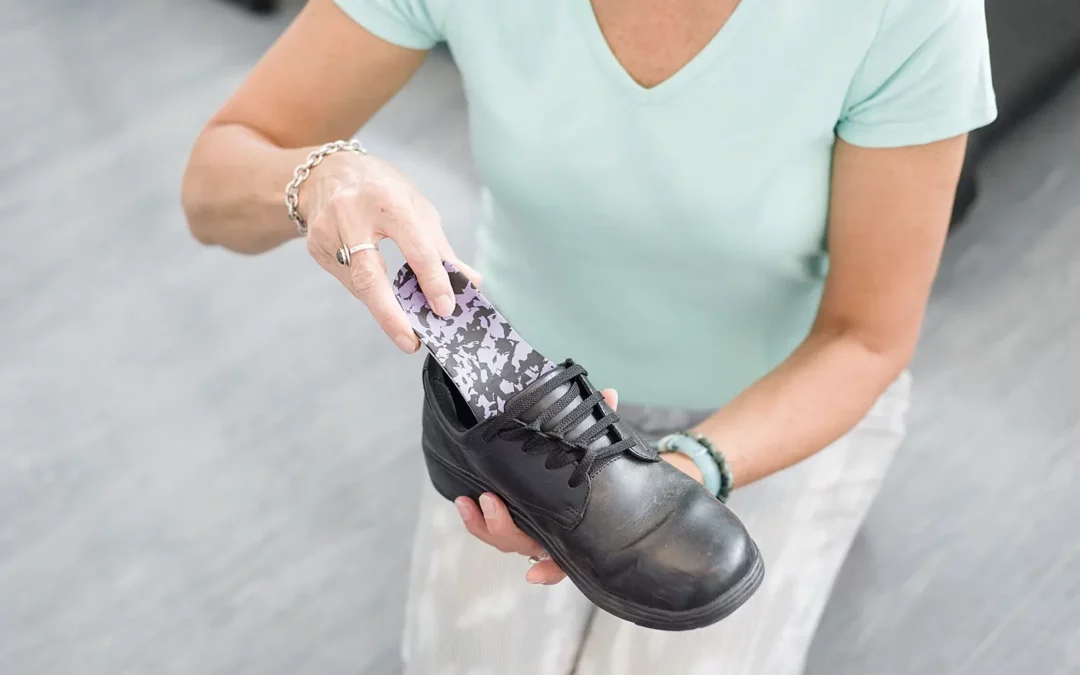Selecting the right school shoes for children is a decision that goes beyond mere aesthetics. A good pair of school shoes plays a crucial role in a child’s overall well-being and development. It’s not just about style but comfort, support, and durability.
In this comprehensive guide, we delve into the essential features that make a school shoe stand out, ensuring the health and happiness of young students.
- We offer a shoe fitting service if you need help selecting footwear.
1. Comfort is Key
The foundation of a good school shoe is comfort. Children spend a significant portion of their day at school, often on their feet, so their shoes must provide a comfortable experience. Look for shoes with ample cushioning, especially around the insole and collar. The insole should support the arch and mid-foot, preventing fatigue and discomfort during long hours of wear.
2. Proper Fit
Ill-fitting shoes can lead to many problems, from blisters to long-term foot issues. A good school shoe must fit properly, with enough room for the toes to move freely but not too much space that the foot slides around. The shoe should also offer a secure fit around the heel, preventing unnecessary friction. Regularly checking and updating the shoe size as a child’s feet grow is essential to ensure a proper fit.
A shoe should be fitted in length to the longest toe and there should be a thumbs width between the end of the longest toe and the end of the shoe.
3. Durability
School life can be tough on shoes, with children running, playing, and engaging in various activities. A durable school shoe should withstand the daily wear and tear, maintaining its structure and support over time. Reinforced toe caps and quality materials, such as leather or synthetic blends, contribute to the shoe’s longevity. Please note a school shoe lasts no longer than one school year, even if the fit is still ok. Some children will wear out their shoes more frequently than others, and regular changeover is imperative to maintain good foot health.
4. Non-Slip Soles
Children are known for their boundless energy, which often translates into exuberant play on various surfaces. A good school shoe should have a non-slip sole, providing traction on different terrains to reduce the risk of slips and falls. This feature is especially crucial in wet or slippery conditions, promoting a safer environment for children.
5. Breathability
Long hours in closed shoes can lead to sweaty feet, creating an environment conducive to bacteria and fungi. A breathable shoe, often achieved through mesh or ventilation panels, allows air circulation, keeping the feet cool and reducing the likelihood of unpleasant odours or infections. Natural materials like leather also are a good breathable material option.
6. Ease of Closure
An easy-to-use closure system is essential for younger children or those still mastering the art of tying shoelaces. Hook-and-loop straps, zippers, or slip-on designs provide convenience without compromising the security of the fit.
7. Arch Support / midfoot structure
Proper arch and mid-foot structural support is crucial for developing a child’s feet. Flat shoes can lead to various issues, including fallen arches and discomfort. A good school shoe should provide adequate arch support to promote healthy foot development and reduce the risk of long-term problems.
8. Weight
Children carry a considerable load in their backpacks, so a lightweight shoe can make a significant difference. Heavy shoes can contribute to fatigue and discomfort, hindering a child’s ability to stay active and engaged throughout the day.
9. Stylish yet Practical Design
While aesthetics may not be the primary concern, a stylish yet practical design can contribute to a child’s overall satisfaction with school shoes. A design that appeals to parents and students while considering factors like uniform requirements strikes the right balance between fashion and functionality.
10. Affordability
Quality doesn’t always have to come with a hefty price tag. A good school shoe should be affordable without compromising on essential features. Parents often need to buy multiple pairs as their child grows, so an economical option that meets all the necessary criteria is highly desirable.
Conclusion
A good school shoe is a harmonious blend of comfort, durability, safety, and style. As parents and guardians navigate the challenge of selecting the perfect pair for their children, considering these features can lead to a choice that meets immediate needs and contributes to the overall health and development of a child’s feet. Investing time and thought into the selection process can result in happy, active, and comfortable students ready to conquer the challenges of the school day.

